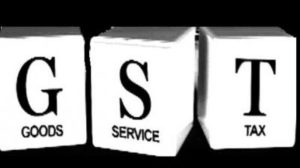GST was one of the historic structural reforms brought in indirect taxes in 2017. Its Chief architect Late Mr Arun Jaitley at the time of roll out said – “It will be an India where Centre and States will work harmoniously towards the common goal of shared prosperity. The unanimity of the Constitutional amendment and the consensus of the GST Council highlights that India can rise above narrow politics for the nation’s interest. With the GST, neither the state nor the Centre loses its sovereignty. In contrast they will pool their sovereignty on decisions on indirect taxes.”
True to this vision for the historic structural reform, the GST has been gradually maturing into a tax that has integrated the country economically. It has consolidated numerous taxes and cesses to one tax and facilitated formalization of economy. It has resulted in the efficiency gains in logistic and transport sectors.
It has also led to significant benefits to MSME by way of enhanced threshold and composition limits. The effective tax incidence on almost every commodity came down substantially. Through several rate reductions an annual benefit of one lakh crore has been extended to consumers. It amounts to 10% reduction in overall tax incidence. An average household now saves about 4% on its monthly spends on account of reduced GST rates.
During this phase of maturing, several challenges were faced by GST. This was natural as transition was daunting. GST Council has been proactive in resolving issues during transition. In the last two years there has been addition of more than 60lakh new taxpayers, a total of about 40 crores returns were filed, 800 crore invoices were uploaded, and 105 crore e-way bills were generated. There has been extensive engagement with stakeholders. A simplified new return system is being introduced from April 1, 2020. This is under pilot run. It will make return filing simple with features like SMS based filing for nil return, return pre-filling, improved input tax credit flow and overall simplification.
Further, Finance Minister added that refund process has been simplified and has been made fully automated with no human interface. Electronic invoice is another innovation wherein critical information shall be captured electronically in a centralized system. It will be implemented in a phased manner starting from this month itself on optional basis. It will facilitate compliance and return filing.
Further, several measures have been taken for improving compliance. Aadhaar based verification of taxpayers is being introduced. This will help in weeding out dummy or non-existent units. Dynamic QR-code is proposed for consumer invoices. GST parameters will be captured when payment for purchases is made through the QR-code. A system of cash reward is envisaged to incentivise customers to seek invoice. Deep data analytics and AI tools are being used for crackdown on GST input tax credit, refund, and other frauds and to identify all those who are trying to game the system. Invoice and input tax credit matching is being done wherein returns having mismatch more than 10 percent or above a threshold are identified and pursued. Significant policy level changes have also been made. GST rate structure is also being deliberated so as to address issues like inverted duty structure.
Further, on custom side exemptions from customs duty have been given in public interest from time to time. However, a number of these have outlived their utility or have become outdated. On review, certain such exemptions have been withdrawn. Further, custom duty is being raised on items like footwear and furniture so as to encourage labour intensive sectors in MSME for employment generation.
Even a nominal health cess, by way of a duty of customs, is being levied on the imports of medical equipment keeping in view that these goods are now being made significantly in India. The proceeds from this cess shall be used for creating infrastructure for health services in the aspirational districts.
In other changes, customs duty is being reduced on certain inputs and raw materials while it is being revised upward on certain goods which are being made domestically. In the previous budget, basic custom duty of 10% was imposed on the news print and lightweight coated paper which is now proposed to be reduce from 10% to 5%.
Further as a source of revenue, excise duty has been raised by way of National Calamity Contingent Duty on Cigarettes and other tobacco products. However, no change is being made in the duty rates of bidis.
____________________________________________________________________________________________________________________________________
We’re listening:
Reach us at https://taxmantra.com/compliance-retainer-india or Call/WA us at +91-9230033070 for any support/query/feedback.
___________________________________________________________________________________________________________________________
 customersuccess@taxmantra.com
customersuccess@taxmantra.com Toll Free:
Toll Free:  Contact Us
Contact Us


